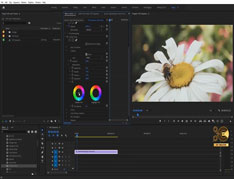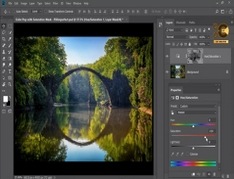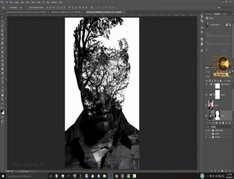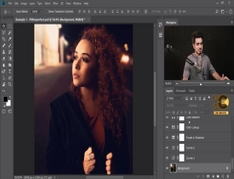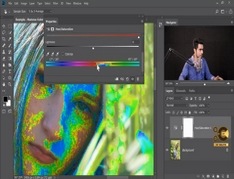You must need to login..!
توضیح
رازهای کوچک عکاسی پرتره در نور طبیعی
برای دانلود رایگان رازهای کوچک عکاسی پرتره در نور طبیعی با کیفیت full hd 1080p از پلیر سایت یا لینک زیر استفاده کنین
لینک دانلود link download
نورپردازی الگوی کنتراست دو بعدی را ایجاد می کند که مغز برای تشخیص اشیاء سه بعدی در عکس ها تعبیر می کند. در یک تجربه مشاهده حضوری ، مغز به چشم انداز استریوسکوپی ، اختلاف منظر متکی است ، علاوه بر سرنخ هایی که توسط الگوهای برجسته و سایه ایجاد می شود ، باعث ایجاد نور در جسم می شود. مغز هنگام مشاهده عکس سعی می کند الگوهای کنتراست و رنگی را که با آن خاطرات حسی دیگر دیده می شود مطابقت دهد.
مبنای اصلی آنچه در نورپردازی به نظر می رسد “عادی” است ، جهت و شخصیت منابع طبیعی و مصنوعی و زمینه ارائه شده توسط سرنخ های دیگر است. در مثال ، عکاس یک ژل گرم کننده بر روی فلاش زنی که در اواخر بعد از ظهر در یک مزرعه ایستاده است ، اضافه کرد. بیننده زمان روز را از زاویه سایه ها می داند و تعادل رنگ خنثی در آن متن عجیب به نظر می رسد. اما به طور مشابه ، تصویر زن در صورت پوشاندن و پوشاندن یک خاکستری سفید یا خنثی خاکستری غیر طبیعی غیر طبیعی به نظر می رسد زرد.
هدف در همه عکسها ایجاد تصور از عادی بودن نیست. اما مانند سحر و جادو ، دانستن اینکه مخاطب به طور عادی چه انتظاری را برای ترسیم یک استراتژی روشنایی دارد که مغز را فریب می دهد یا تصوری غیر از تصور عادی ایجاد می کند. جهت نور نسبت به دوربین می تواند باعث شود یک توپ گرد یک دیسک مسطح یا کره باشد. موقعیت نکات برجسته و جهت و طول سایه ها سرنخ های دیگری را برای شکل دادن و بیرون از منزل در روز فراهم می کند. لحن سایه ها بر روی یک جسم یا سرنخ های متنی در مورد زمان روز یا محیط و با استنباط بر اساس تجربه شخصی ، روحیه فرد را فراهم می کند.
یک عکاس ماهر می تواند چگونگی واکنش بیننده به محتویات عکس را با دستکاری نورپردازی ، دستکاری کند. در فضای بیرون که می تواند نیاز به تغییر مکان داشته باشد ، منتظر زمان ایده آل روز یا در بعضی موارد زمان ایده آل سال برای روشنایی باشید تا با استفاده از بازتاب ها یا فلاش ، نور دلخواه را در عکس ایجاد کرده یا نورپردازی طبیعی را دستکاری کنید. در یک استودیو هیچ محدودیتی برای گزینه های نورپردازی اشیاء اتر وجود ندارد و باعث می شود که به نظر برسد به اهداف طبیعی عکاسی طبیعی یا سورئال است. اما بیشتر اوقات واکنش بخشی از منظره از پایه این مسئله ناشی می شود که آیا روشنایی به نظر می رسد طبیعی / طبیعی است یا با سرنخ های دیگر مقایسه نمی شود. اشتباهات عکاس کم مهارت اغلب هنگام مخلوط کردن فلش و روشنایی طبیعی با فلاش نکات برجسته و سایه ای که در پس زمینه روشن دیده می شود مطابقت ندارد. اگر پس زمینه توسط نور خورشید روشن شود اما به نظر می رسد صورت در پیش زمینه ظهر عکاسی شده است ، به نظر نمی رسد طبیعی باشد زیرا سرنخ ها مطابقت ندارند.
Lighting creates the 2D pattern of contrast the brain interprets to recognize 3D objects in photographs. In an in-person viewing experience the brain relies on stereoscopic vision, parallax, shifting focal in addition to the clues created by the highlight and shadow patterns the light on the object creates. When viewing a photo the brain tries to match the patterns of contrast and color it seen to those other sensory memories.
The baseline for what seems “normal” in lighting is the direction and character of natural and artificial sources and the context provided by other clues. In the example the photographer added a warming gel on the flash of the woman standing in a field in late afternoon light. The viewer knows the time of day from the angle of the shadows and neutral color balance would have seemed odd in that context. But similarly the image of the woman if masked out and put on a plain white or neutral gray background would seem abnormally yellow.
The goal in all photographs is not to create an impression of normality. But as with magic, knowing what the audience normally expects to see required to pull off a lighting strategy which fools the brain or creates an other than normal impression. Light direction relative to the camera can make a round ball appear to be a flat disk or a sphere. The position of highlights and direction and length of shadows will provide other clues to shape and outdoors the time of day. The tone of the shadows on an object or provide contextual clues about the time of day or environment and by inference based on personal experience the mood of person.
A skilled photographer can manipulate how a viewer is likely to react to the content of a photo by manipulating the lighting. Outdoors that can require changing location, waiting for the ideal time of day or in some cases the ideal time of year for the lighting to create the desired impression in the photo or manipulating the natural lighting by using reflectors or flash. In a studio setting there is no limit to options for lighting objects to ether make them look “seen by eye” normal or surreal as the goals for the photograph require. But more often than not the reaction on the part of the view will be from the baseline of whether the lighting seems normal/natural or not compared to other clues. Mistakes less skilled photographer often make when mixing flash and natural lighting is not matching with the flash the highlight and shadow clues seen in the ambient lit background. If the background is illuminated by the setting sun but the face in the foreground appears to have been photographed at noon it will not seem normal because the clues don’t match.



